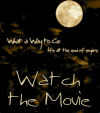“If we cannot envision the world we would like to live in, we cannot work towards its creation. If we cannot place ourselves in it in our imagination, we will not believe it is possible.”
Chellis Glendinning (born June 1947) is a European-American author of creative nonfiction, licensed psychotherapist, and political activist. She is noted as a pioneer in the field of ecopsychology, a proponent of land-based culture, and a critic of technological society, having worked with such contemporaries as Jerry Mander, Vandana Shiva, Helena Norberg-Hodge, and Kirkpatrick Sale.
Glendinning’s relations include Thomas Hooker, founder of the colony of Connecticut; Dr. Frank E. Bunts, founder of the Cleveland Clinic; and the civil rights activist, her mother Mary Hooker Glendinning.
She has written five books, as well as for journals, magazines, and newspapers including Orion, CounterPunch, ColdType: The Reader, Alternet, Tikkun, Race, Poverty and the Environment San Francisco Bay Guardian and Santa Fe New Mexican.
Glendinning was featured in the 2007 documentary What a Way to Go: Life at the End of Empire.
In 2007 Glendinning’s bilingual folk opera De Un Lado Al Otro, written in collaboration with ethnomusicologist Cipriano Vigil, was presented at the Lensic Performing Arts Center in Santa Fe NM. Robert Castro directed.
Glendinning graduated from the University of California, Berkeley in social sciences in 1969, at which time she was inducted into Phi Beta Kappa (Alpha of California Chapter). She received her Ph. D in psychology from Columbia Pacific University in 1984.
Her Off the Map won the 2000 National Federation of Press Women Book Award in general nonfiction, and Chiva was honored with the same award in 2006. In 1989 she received the New Mexico Humanities Council First Times Award for Short Story Writing, and was named Best Local Writer by the Río Grande Sun of Española NM in 2000 and 2003.
In 1997 Glendinning won the Río Arriba County, Zero Injustice Award for her “courageous stand in support of the customs, culture, and traditions of the Native American and Indo-Hispano people of northern New Mexico.”
Her papers are housed in the Labadie Collection of the University of Michigan. (From the Wikipedia entry.)





